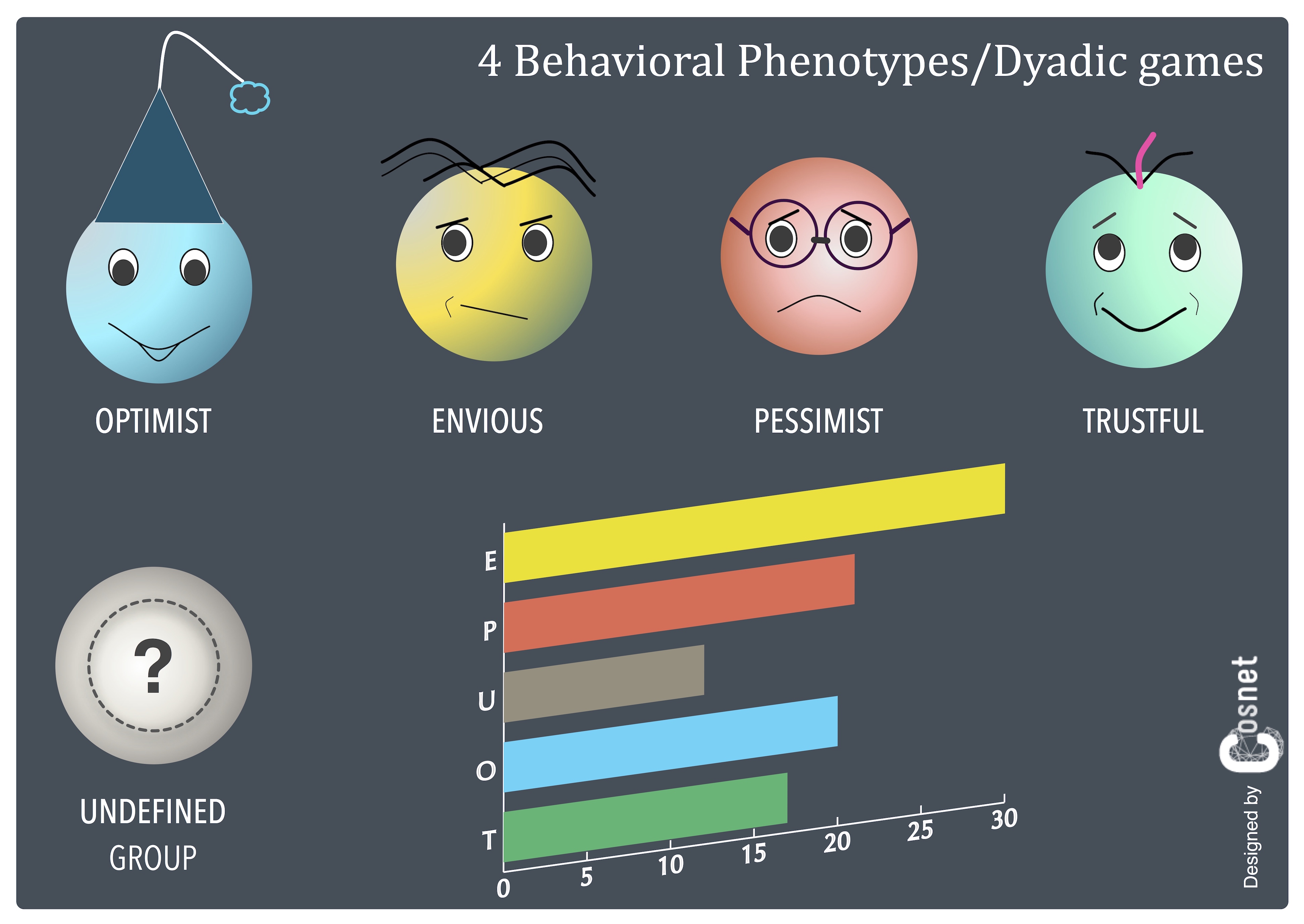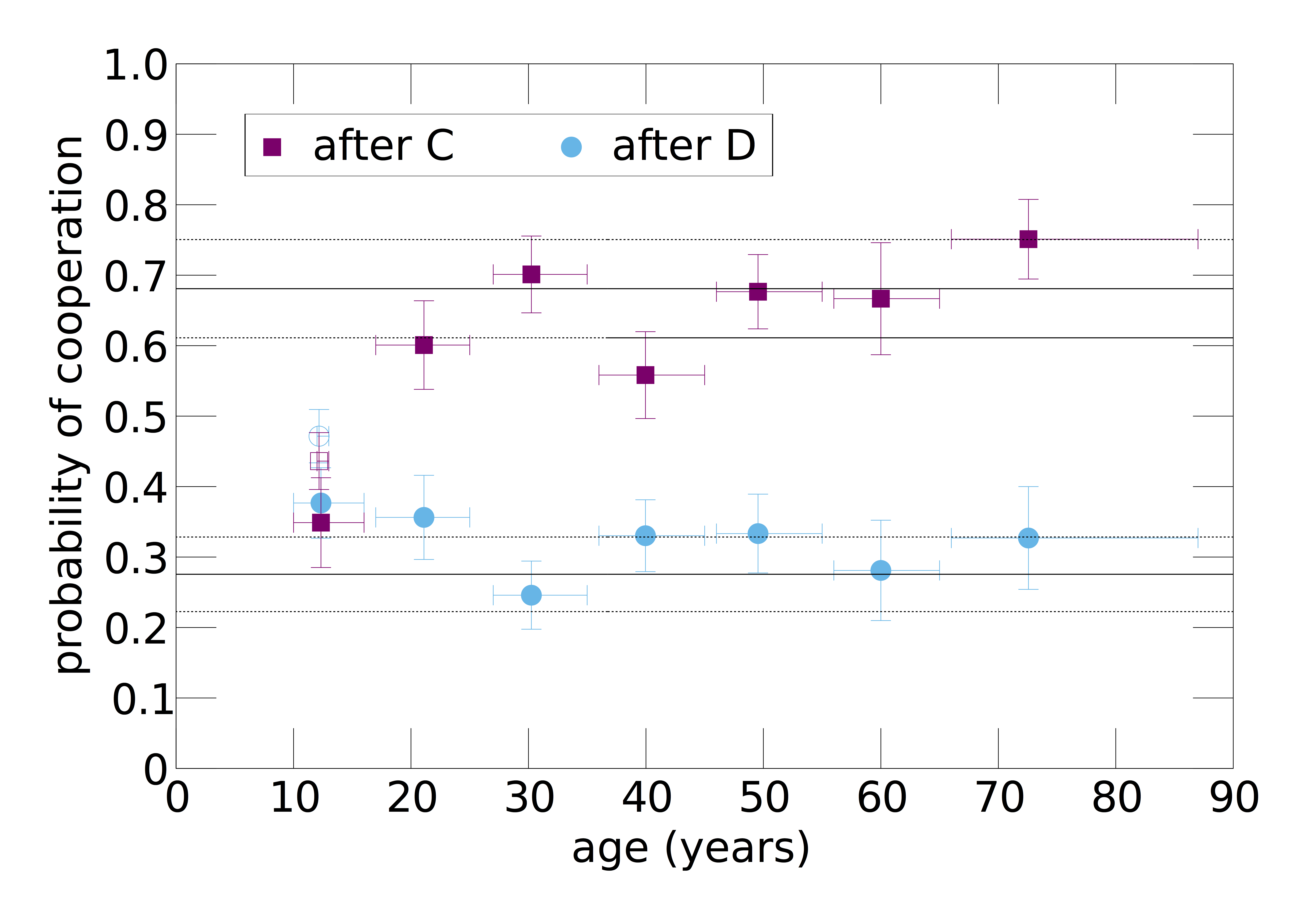Humans behavioral phenotypes in dyadic games

Socially relevant situations that involve strategic interactions are widespread among animals and humans alike. To study these situations, theoretical and experimental works have adopted a game-theoretical perspective, which has allowed to obtain valuable insights about human behavior. However, most of the results reported so far have been obtained from a population perspective and considered one specific conflicting situation at a time. This makes it difficult to extract conclusions about the consistency of individuals’ behavior when facing different situations, and more importantly, to define a comprehensive classification of the strategies underlying the observed behaviors. Here, we present the results of a lab-in-the-field experiment in which subjects face four different dyadic games, with the aim of establishing general behavioral rules dictating individuals’ actions.
By analyzing our data with an unsupervised clustering algorithm, we find that all the subjects conform, with a large degree of consistency, to a limited number of behavioral phenotypes (Envious, Optimist, Pessimist, and Trustful), with only a small fraction of undefined subjects. We also discuss the possible connections to existing interpretations based on a priori theoretical approaches. Our findings provide a relevant contribution to the experimental and theoretical efforts towards the identification of basic behavioral phenotypes in a wider set of contexts without aprioristic assumptions regarding the rules or strategies behind actions. From this perspective, our work contributes to a fact-based approach to the study of human behavior in strategic situations, that could be applied to simulating societies, policy-making scenario building and even for a variety of business applications.
J. Poncela-Casasnovas, M. Gutierrez-Roig, C. Gracia-Lazaro, J. Vicens, J. Gomez-Gardenes, J. Perello, Y. Moreno, J Duch, and A. Sanchez, “Humans display a reduced set of consistent behavioral phenotypes in dyadic games”, Science Advances 2, e1600451 (2016).





